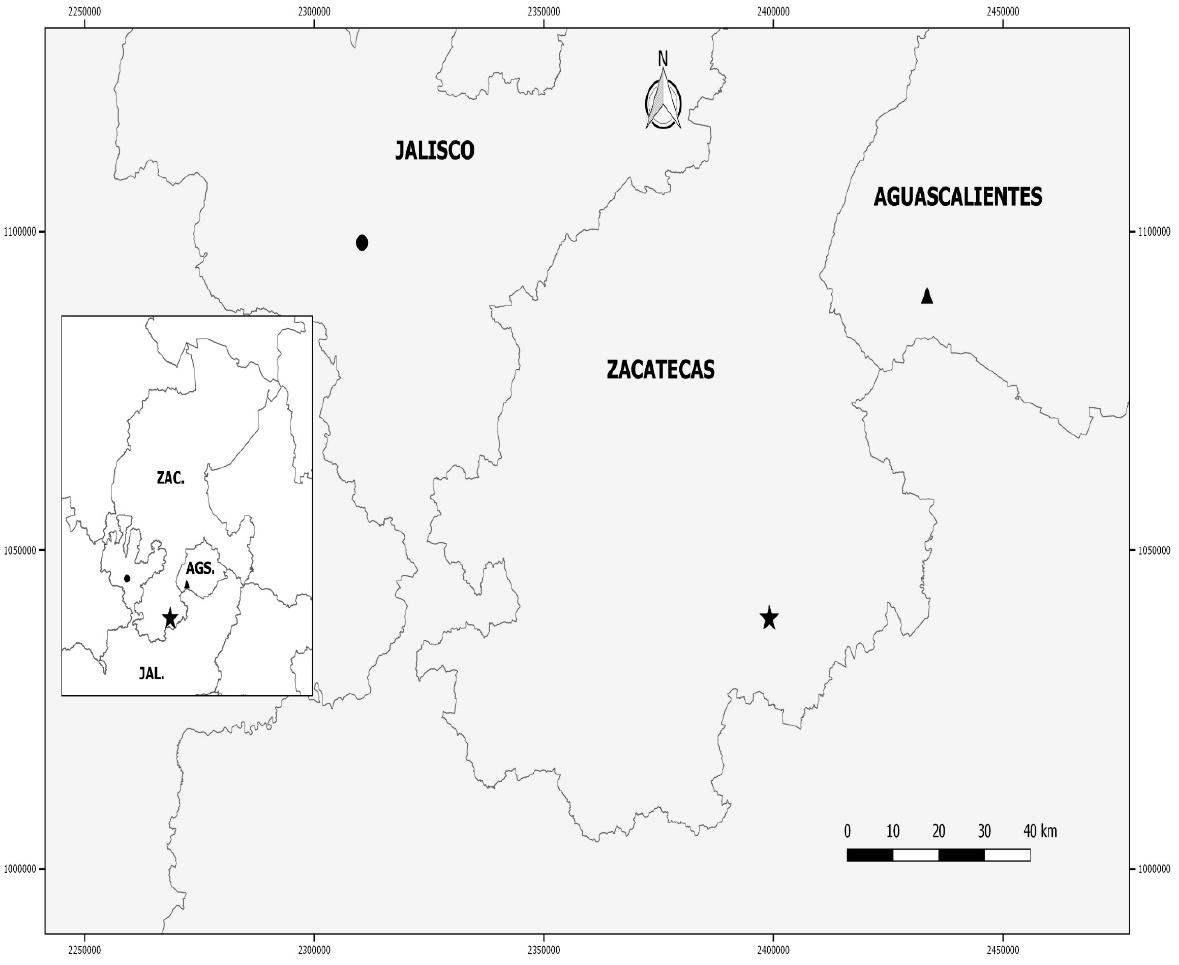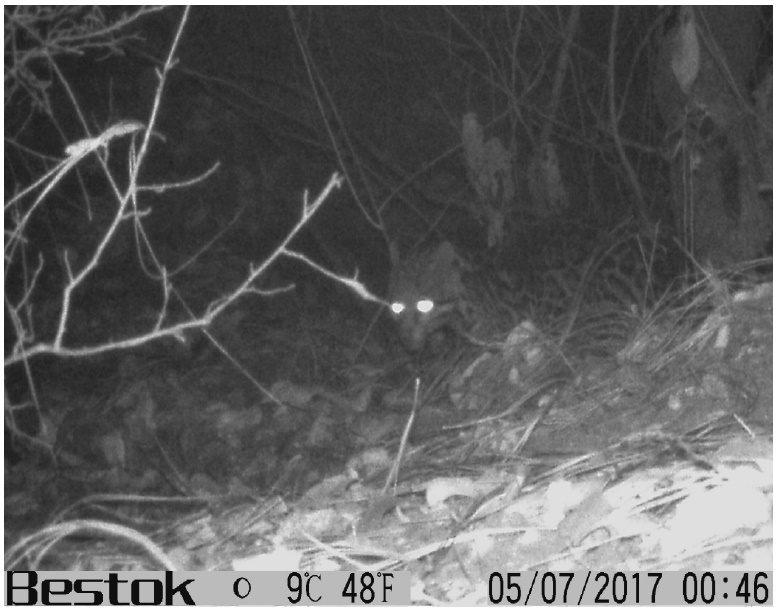Introduction
Zacatecas is one of States where mammals are poorly known, as evidenced by the recent work on this group of vertebrates (López-Ortega et al. 2012; Ríos-Muñoz et al. 2017). On the other hand, the geographical location of Zacatecas favors a number of different environments, including deserts, mountain ranges and areas with tropical vegetation (INEGI 2015). Matson and Baker (1986) mention that this combination of tropical and mountainous areas in southwestern Zacatecas may be attractive to wild feline species such as the margay (Leopardus wiedii), jaguarondi (Puma yagouaroundi) and ocelot (Leopardus pardalis). However, no records of any of these three species of felines are currently available for Zacatecas (Ríos-Muñoz et al. 2017).
In Mexico, the ocelot is a species listed as endangered of extinction in the Mexican Official Standard 059 (NOM 2010). In recent years, the known geographic distribution of this species has been extended to the states of Aguascalientes (Valdez-Jiménez et al. 2013) and Durango (Servin et al. 2016). Camera trap images have confirmed the presence of ocelots at altitudes and vegetation types not previously reported (e. g., oak-pine forest, Iglesias et al. 2008; pine-oak forest, Ahumada-Carrillo et al. 2013).
In recent studies on the ocelot in Mexico, De la Torre et al. (2016) and Torres-Romero et al. (2017) report Zacatecas as one of the states where this species has been registered. However, the references mentioned correspond to Aguascalientes records. On the other hand, in a recent work on the mammals of Zacatecas, Ríos-Muñoz et al. (2017) reported two feline species only: puma (Puma concolor) and bobcat (Lynx rufus). Although Matson and Baker (1986) mentioned that some local inhabitants of southwestern Zacatecas have encountered small spotted cats that could match the margay or the ocelot, there were no confirmed records of these species to date. This study is the first confirmed report of the presence of the ocelot in the State of Zacatecas.
Materials and Methods
As part of a study to gain a deeper insight into mammal diversity, a Bestok Hunting camera trap was installed in the Sierra de Nochistlan, municipality of Nochistlan de Mejia, southwestern Zacatecas (Figure 1). The camera was set to take one picture every 5 seconds, and subsequently was placed on an oak trunk at a height of approximately between 30 and 40 cm from the ground, in a path where animal tracks were observed. The camera was left in operation taking pictures for three months (92 days), from May to August 2017. The vegetation where the camera trap was placed corresponds to an oak-pine forest.
Results
This prospection in the Sierra de Nochistlan (21.3612° N, -102.9683° W; Figure 2) recorded five photographs of one ocelot (Leopardus pardalis) on 7 May 2017 between 00:45 and 00:47 hours, in an oak-pine forest at 2,540 masl, which is a remarkable finding for this Neotropical feline. The distance at which this specimen was photo-captured did not allow recognizing detailed features, such as sex or body status. Other mammal species recorded in this same site during the observation period were the white-tailed deer (Odocoileus virginianus), coati (Nasua narica), gray fox (Urocyon cinereoargenteus) and puma (Puma concolor).
Discussion
The record of an ocelot that is closest to the Sierra de Nochistlan, Zacatecas is located in Calvillo, Aguascalientes, approximately 60 km to the northeast of the study site, at 1,898 masl in a low subdeciduous forest (Valdez-Jiménez et al. 2013; Figure 1). Other close records are located in Bolaños, Jalisco, approximately 108 km to the northwest, where this species was recorded at two sites at 1,597 and 2,097 masl in tropical deciduous forest and pine-oak forest, respectively (Ahumada-Carrillo et al. 2013; Figure 1).
The record of the ocelot in the southwestern region of the state of Zacatecas is outstanding, because it refers to an area between the states of Aguascalientes and Jalisco where no previous confirmed records were available. The presence of this species in this region of Zacatecas also suggests the existence of important areas that serve as biological corridors, not only for mammal species, but also of other vertebrate groups such as birds (Pérez-Valadez 2016). This corridor between the Pacific coast and the states of Jalisco, Zacatecas and Aguascalientes has also been mentioned by Valdez-Jiménez et al. (2013), who also mention reptiles in addition to birds. While there are fragments of land that show connectivity in the Sierra de Nochistlan, some forest areas have decreased due to human activities, such as hunting and illegal logging (pers. obs.), which threaten vulnerable species such as the ocelot.











 nova página do texto(beta)
nova página do texto(beta)




